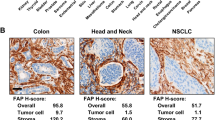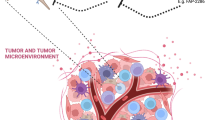Abstract
Purpose
A hallmark of cancer is metabolic reprogramming, which is exploited by cancer cells to ensure rapid growth and survival. Pyruvate kinase M2 (PKM2) catalyzes the final step in glycolysis, a key step in tumor metabolism and growth. Recently, we reported the radiosynthesis of the first positron emission tomography tracer for visualizing PKM2 in vivo—i.e., [11C]DASA-23. Due to the highly promising imaging results obtained with [11C]DASA-23 in rodent model glioblastoma, we set out to generate an F-18-labeled version of this tracer, with the end goal of clinical translation in mind. Herein, we report the radiosynthesis of 1-((2-fluoro-6-[18F]fluorophenyl)sulfonyl)-4-((4-methoxyphenyl)sulfonyl)piperazine ([18F]DASA-23) and our initial investigation of its binding properties in cancer cells.
Procedure
We synthesized [18F]DASA-23 via fluorination of 1-((2-fluoro-6-nitrophenyl)sulfonyl)-4-((4-methoxyphenyl)sulfonyl)piperazine (10) with K[18F]F/K2.2.2 in N,N-dimethylformamide at 110 °C for 20 min. Subsequently, we evaluated uptake of [18F]DASA-23 in HeLa cervical adenocarcinoma cells and in vitro stability in human and mouse serum.
Results
We successfully prepared [18F]DASA-23 in 2.61 ± 1.54 % radiochemical yield (n = 10, non-decay corrected at end of synthesis) with a specific activity of 2.59 ± 0.44 Ci/μmol. Preliminary cell uptake experiments revealed high uptake in HeLa cells, which was effectively blocked by pretreating cells with the structurally distinct PKM2 activator, TEPP-46. [18F]DASA-23 remained intact in human and mouse serum up to 120 min.
Conclusion
Herein, we have identified a F-18-labeled PKM2 specific radiotracer which shows potential for in vivo imaging. The promising cell uptake results reported herein warrant the further evaluation of [18F]DASA-23 for its ability to detect and monitor cancer noninvasively.







Similar content being viewed by others
References
Cairns RA, Harris IS, Mak TW (2011) Regulation of cancer cell metabolism. Nat Rev Cancer 11:85–95
Warburg O (1956) On the origin of cancer cells. Science 123:309–314
Wong N, De Melo J, Tang D (2013) PKM2, a central point of regulation in cancer metabolism. Int J Cell Biol 2013:242513
Vander Heiden MG, Cantley LC, Thompson CB (2009) Understanding the Warburg effect: the metabolic requirements of cell proliferation. Science 324:1029–1033
Hsu PP, Sabatini DM (2008) Cancer cell metabolism: Warburg and beyond. Cell 134:703–707
Kelloff GJ, Hoffman JM, Johnson B et al (2005) Progress and promise of FDG-PET imaging for cancer patient management and oncologic drug development. Clin Cancer Res 11:2785–2808
Sharma A, Fidias P, Hayman LA et al (2004) Patterns of lymphadenopathy in thoracic malignancies. Radiographics 24:419–434
Christofk HR, Vander Heiden MG, Harris MH et al (2008) The M2 splice isoform of pyruvate kinase is important for cancer metabolism and tumour growth. Nature 452:230–233
Chaneton B, Gottlieb E (2012) Rocking cell metabolism: revised functions of the key glycolytic regulator PKM2 in cancer. Trends Biochem Sci 37:309–316
Bailey E, Stirpe F, Taylor CB (1968) Regulation of rat liver pyruvate kinase. The effect of preincubation, pH, copper ions, fructose 1,6-diphosphate and dietary changes on enzyme activity. Biochem J 108:427–436
Christofk HR, Vander Heiden MG, Wu N et al (2008) Pyruvate kinase M2 is a phosphotyrosine-binding protein. Nature 452:181–186
Bluemlein K, Grüning N-M, Feichtinger RG et al (2011) No evidence for a shift in pyruvate kinase PKM1 to PKM2 expression during tumorigenesis. Oncotarget. doi:10.18632/oncotarget.278
Luo W, Semenza GL (2012) Emerging roles of PKM2 in cell metabolism and cancer progression. Trends Endocrinol Metab 23:560–566
Boxer MB, Jiang J-K, Vander Heiden MG et al (2010) Evaluation of substituted N,N′-diarylsulfonamides as activators of the tumor cell specific M2 isoform of pyruvate kinase. J Med Chem 53:1048–1055
Israelsen WJ, Dayton TL, Davidson SM et al (2013) PKM2 isoform-specific deletion reveals a differential requirement for pyruvate kinase in tumor cells. Cell 155:397–409
Phelps ME, Mazziotta JC (1985) Positron emission tomography: human brain function and biochemistry. Science 228:799
Witney TH, James ML, Shen B et al (2015) PET imaging of tumor glycolysis downstream of hexokinase through noninvasive measurement of pyruvate kinase M2. Sci Transl Med 7:310ra169
Anastasiou D, Yu Y, Israelsen WJ et al (2012) Pyruvate kinase M2 activators promote tetramer formation and suppress tumorigenesis. Nat Chem Biol 8:839–847
Attina M, Cacace F, Wolf AP (1983) Displacement of a nitro-group by [18F] fluoride ion. A new route to aryl flurides of high specific activity. J Chem Soc Chem Commun 1983:108–109
Attiná M, Cacace F, Wolf AP (1983) Labeled aryl fluorides from the nucleophilic displacement of activated nitro groups by 18F-F−. J Labelled Comp Radiopharm 20:501–514
Plenevaux A, Lemaire C, Palmer AJ et al (1992) Synthesis of non-activated 18F-fluorinated aromatic compounds through nucleophilic substitution and decarboxylation reactions. Int J Rad Appl Instrum A 43:1035–1040
Acknowledgements
We would like to thank funding support from the Ben and Catherine Ivy Foundation. We would also like to thank the Radiochemistry Facility at Stanford University for the 18F-18 production and Dr. Bin Shen and Jun Hyung Park for the helpful discussions about this synthesis.
Author information
Authors and Affiliations
Corresponding author
Ethics declarations
Conflict of Interest
The authors declare that they have no conflict of interest.
Rights and permissions
About this article
Cite this article
Beinat, C., Alam, I.S., James, M.L. et al. Development of [18F]DASA-23 for Imaging Tumor Glycolysis Through Noninvasive Measurement of Pyruvate Kinase M2. Mol Imaging Biol 19, 665–672 (2017). https://doi.org/10.1007/s11307-017-1068-8
Published:
Issue Date:
DOI: https://doi.org/10.1007/s11307-017-1068-8




